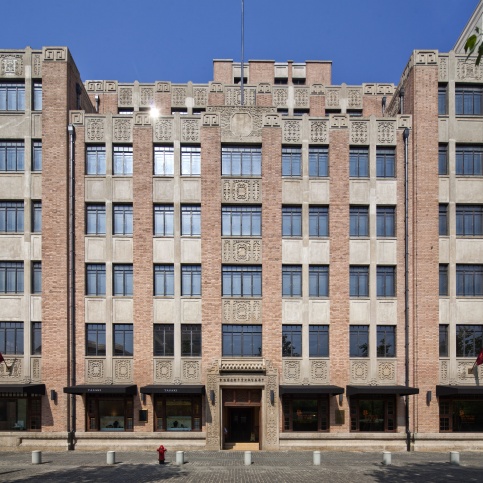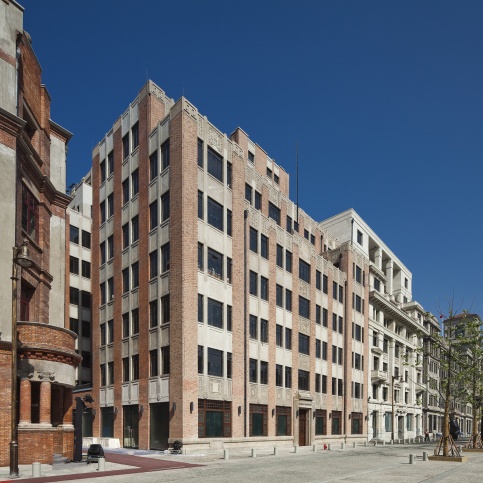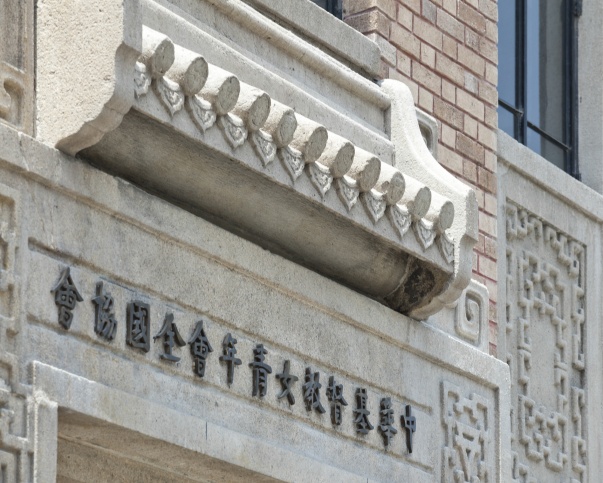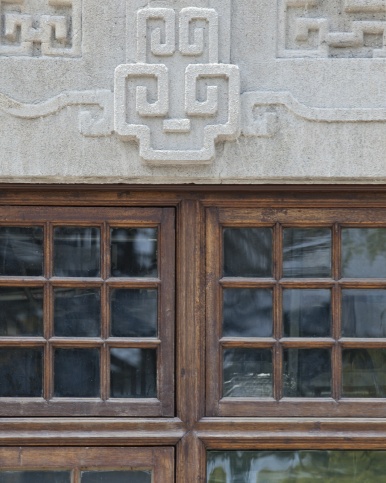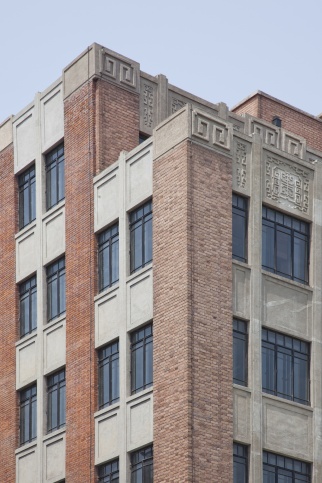In 1923, the National Association of the Chinese Young Women's Christian Association was established, and the idea of gender equality was further incubated throughout the country. In 1927, the American YWCA, which was located on Yuanmingyuan Road at that time, announced that it would transfer the land to the China YWCA. Afterwards, the YWCA raised all the funds for building construction through social donations, and then the magnificent building in front of us today come into being.
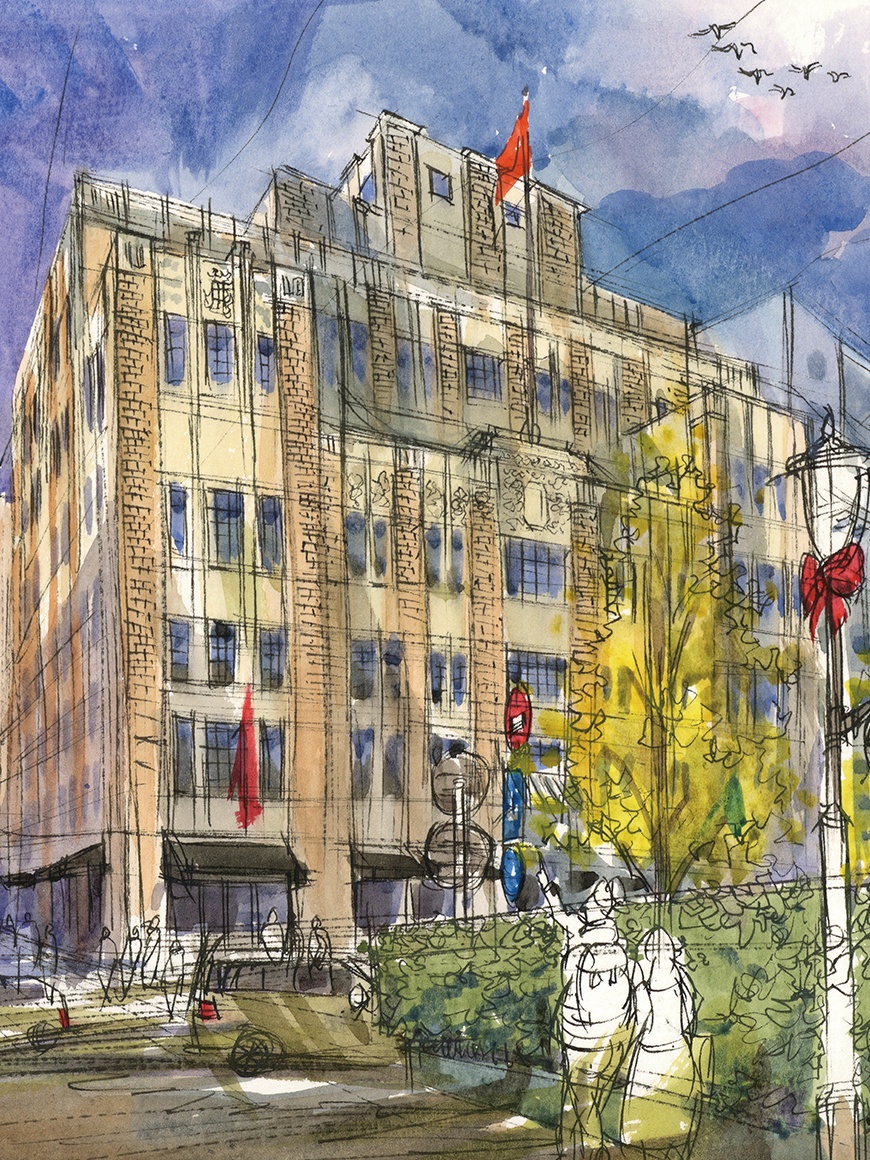

This modernist building contains many traditional Chinese patterns. The textured pink-orange walls along the street are covered with khaki-colored patterns, resembling the delicate patterns on the Chinese ancient paper windows. The top of the entrance gate is decorated with Chinese-style tiles and dripping water, and the door is decorated with a traditional Chinese-style grid. Inside the room, the red, yellow, and green squares appear at the ceiling — the colorful circles set off each other, and the word "吉" in the light green circle can be vaguely seen, representing the good wishes for the visitors.
These exquisite designs combining Chinese and Western styles come from Mr. Li Jinpei, a Chinese designer who was born in Chinatown, New York. In 1923, Li Jinpei was sent to Shanghai by the American YMCA, and he left numerous architectural masterpieces all over China.
On May 22, 1931, a grand groundbreaking ceremony was held for the YWCA Building, and more than 300 guests gathered together. Ms. Sheng Zuxin, then chairman of the YWCA, reported the preparations for the construction of the new building, and Ms. Hou Jiang and Zhen gave a detailed account of the history of the construction of the new building. Finally, Ms. Xue Pa laid the foundation stone and wrote eight letters: "You know the truth, and the truth explains you". The big characters, now this cornerstone is well preserved at the root of the wall on the left side of the outer wall.
Song Meiling, who served as the first lady of the Republic of China, also had connections with the China Young Women's Christian Association. In the summer of 1917, 20-year-old Song Meiling returned to China, eager to enter society and participate in work. At that time, Soong Meiling was very popular. Many schools in Shanghai gave her great opportunities, but those offers was rejected by Soong Meiling's mother, Ni Guizhen, who only appreciated the Shanghai YWCA. Song Meiling worked as an English teacher at the YWCA. When she first entered the society, she did not show timidity due to lack of experience. Instead, she was calm and comfortable in front of the students.
Architectural watercolor painting by: Lu Jun
